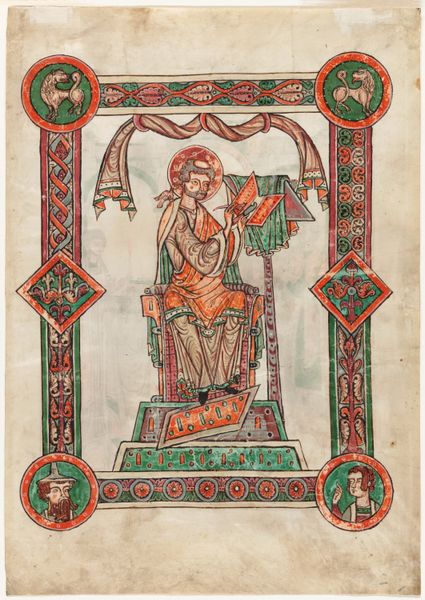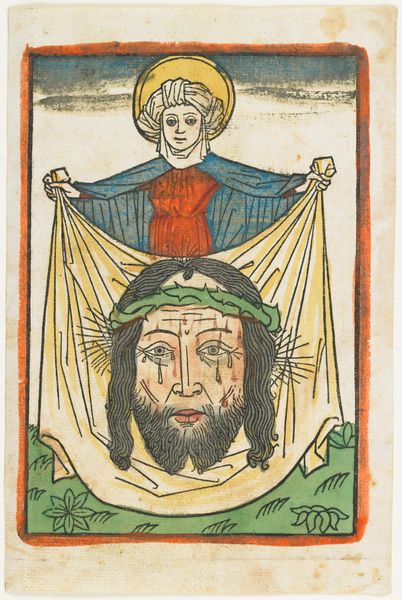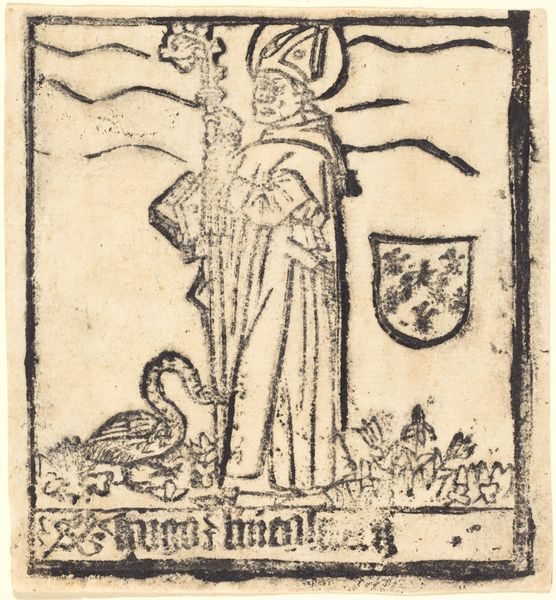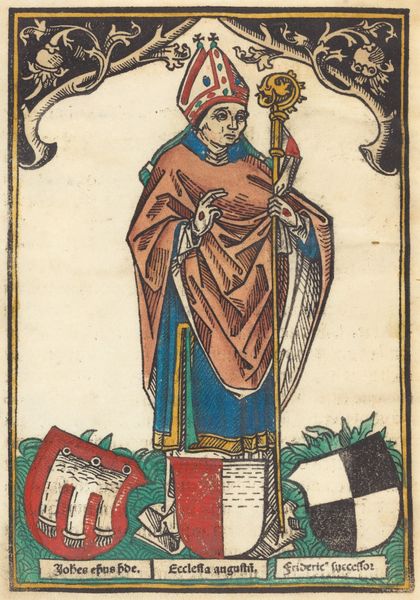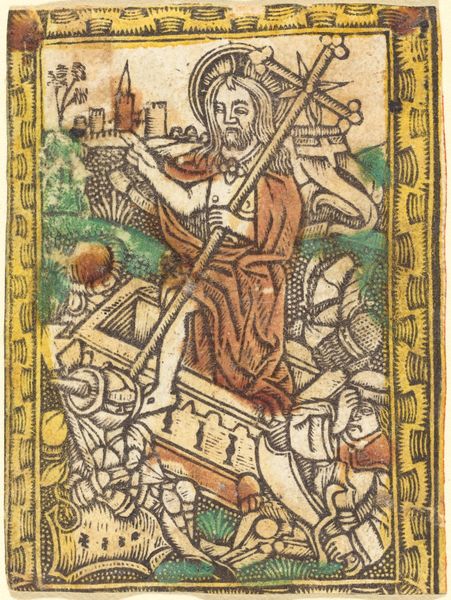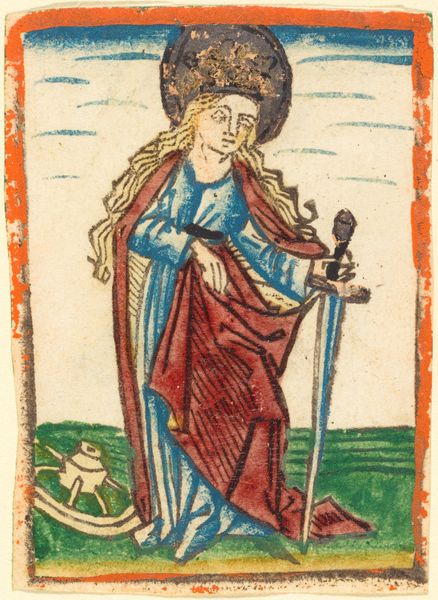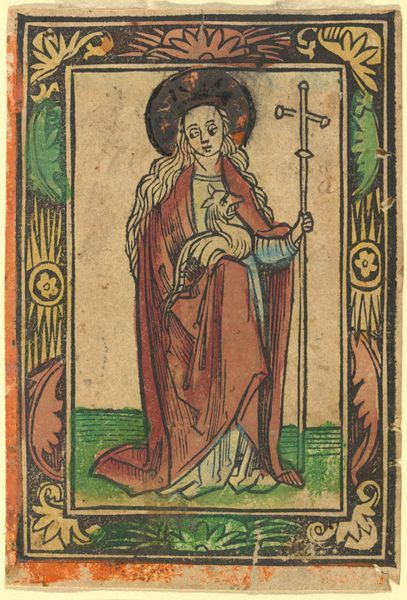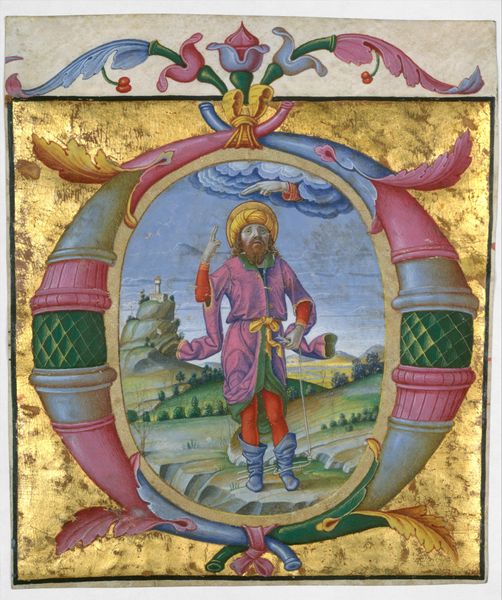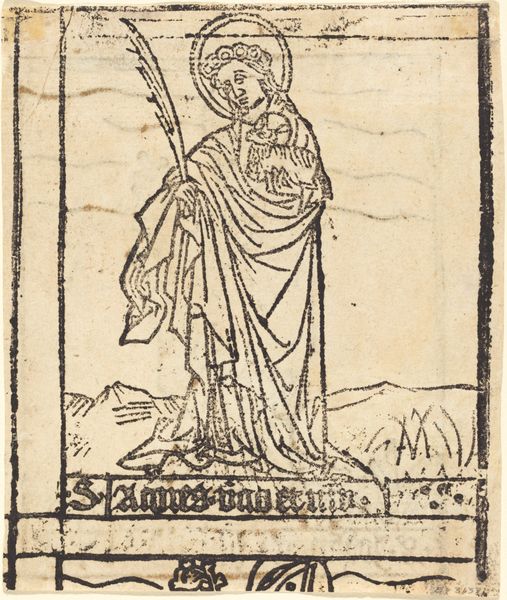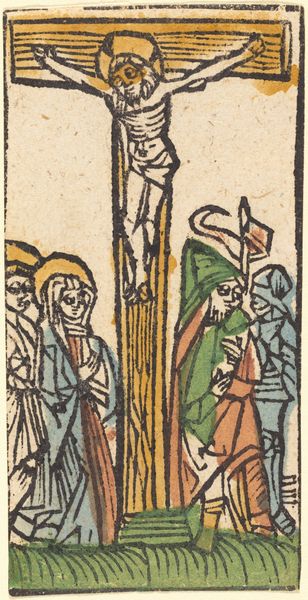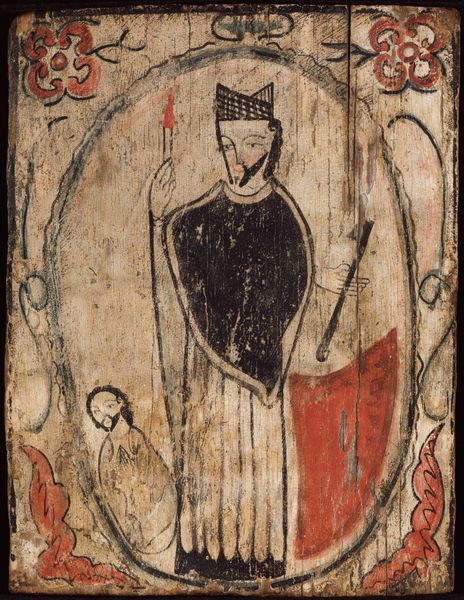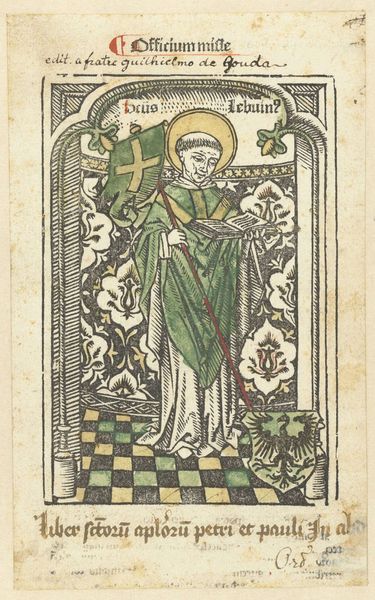
Sacred Monogram in a Sacred Heart on a Cloth Held by an Angel c. 1480
0:00
0:00
# print
Dimensions: Overall: 8.2 x 6.5 cm (3 1/4 x 2 9/16 in.) overall (external frame dimensions): 39.4 x 31.8 cm (15 1/2 x 12 1/2 in.)
Copyright: National Gallery of Art: CC0 1.0
Editor: Here we have a print from around 1480, entitled "Sacred Monogram in a Sacred Heart on a Cloth Held by an Angel," by an anonymous artist. It feels very intimate because of its size, yet there's also this feeling of solemnity. How do you interpret this work? Curator: Well, first off, that combination of intimacy and solemnity makes total sense. Think about the role of these prints back then. This wasn't mass media in our sense; each one carried real weight. Given its devotional nature, the print probably had a very personal meaning. But let's look closer—who gets to see and hold sacred images, and who gets excluded? And how might gender and literacy affect access? Editor: That's a great point, how would access have worked? Was this kind of print widely available, or more targeted to a specific audience? Curator: The printing press democratized art in some ways, yet we should avoid romanticizing this. Knowledge of religious texts, even recognizing symbols like the Sacred Heart, would’ve been unevenly distributed. And think about the implications of who gets to interpret those texts. What are some assumptions about power and social order embedded here? Editor: So, this print wasn't just about faith, but about power structures within faith? Curator: Exactly! And those power dynamics affect how religious messages are spread, who's included, who's excluded, whose voices are amplified, and whose are silenced. What's printed shapes culture and belief, consciously or unconsciously. Editor: I hadn't considered it in that way, seeing it as a product of its specific time, a representation of both faith and hierarchy. Thanks for making that so clear! Curator: Anytime! It is through understanding art in its historical context that its importance truly takes shape.
Comments
No comments
Be the first to comment and join the conversation on the ultimate creative platform.
